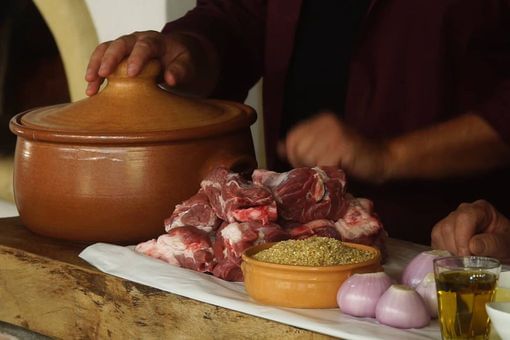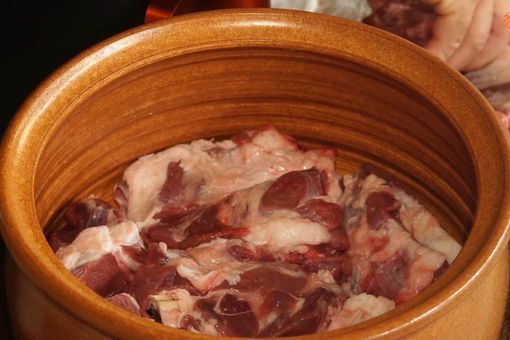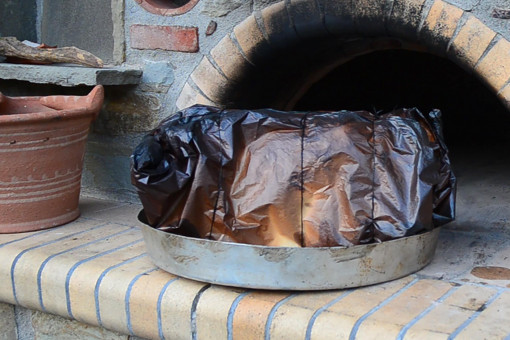INGREDIENTS
- 2.5kg (5.5lb) mutton (front shank)
- 3lt water
- 300g groats
- 1 tbsp sea salt (preferably fleur de sel)
- 1 tsp black pepper
- 2 tbsp tomato paste
- 4 medium onions
- 100ml extra virgin olive oil
PREPARATION
Place the pieces of meat inside a 30-cm-diameter clay cooking pot, add 3lt of water and it’s ready to go. Put it in the oven (once it’s preheated) and slow-cook for 3 hours. This is your first task and the first stage of this recipe.
COOKING
Cooking in the traditional wood-fired oven
Before preparing the ingredients, your first task is to preheat the traditional wood-fired oven. This process takes some time. Use thin pieces of dry wood as kindling. Place them inside the oven (back to the middle) and initiate fire using alcohol-soaked cotton. Add thick pieces of dry hardwood and leave the oven’s door open to establish the fire. Once the fire is well established, close the door and keep the internal chimney open, allowing the smoke to escape. After you have saturated your oven and the fire has burnt down to embers, remove the embers with a shovel (you can use them in your charcoal grill). Close the door and check the temperature. If it is over 250⁰C (482⁰F), allow the oven temperature to fall. The waiting time is this stage at which the oven matures and the heat is distributed evenly.
When the temperature is down to 250⁰C (482⁰F), place the clay cooking pot with the mutton inside the oven. Slowly cook for 3 hours. This whole process, as we have described it so far, requires a well-built traditional wood-fired oven, which can accumulate heat and re-radiate it slowly and steadily. If the temperature falls rather quickly, you will not be able to cook your food properly. Adequate heat retention for the duration of the cooking is highly required.
While cooking the mutton, you can prepare a few appetizers on your charcoal grill, using the embers from the oven, to please your company while waiting. These side dishes, along with a glass of wine, will make you forget about the waiting time. Nowadays, grilling and traditional cooking are a way of communication.
Three hours later, it follows the second stage of the cooking process. Pour a little water in a small pan and add the onions chopped. Stir until they soften and add tomato paste, spices, olive oil, and groats, lastly. Don’t overcook them. Cooking these ingredients, until they are at the same temperature with the mutton in the oven and then adding them, is necessary for not disturbing the slow-cooking method. As you may notice in the video, after 3 hours the oven’s temperature is down to 120⁰C (248⁰F). After adding these processed ingredients to the mutton that is still being slowly cooked, close the lid; place the pot at the back of the oven and cook for one extra hour.
After one hour, remove the clay cooking pot and wait until the temperature reaches the desired level. It is served hot. Accompany it with feta-cheese and (cooked) wild greens salad.
Note that we didn’t have to add any extra water during cooking. This is quite an achievement! When we slowly cook our food, the evaporation rate of water is low and our food’s range of flavor remains intact. Slow-cooking at low temperatures is highly important.
Happy cooking everyone! Enjoy cooking with a good company!








